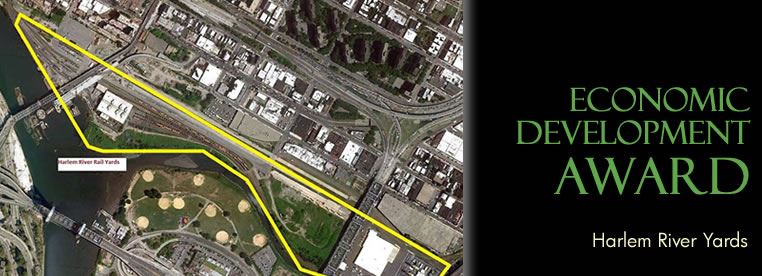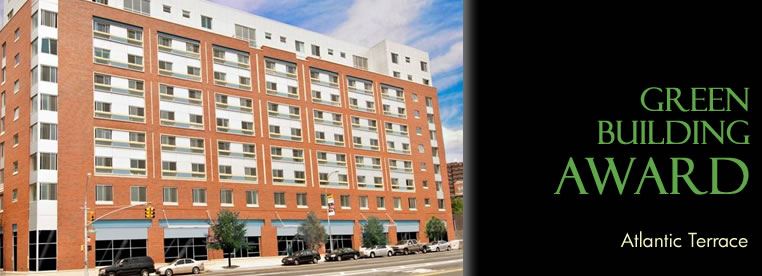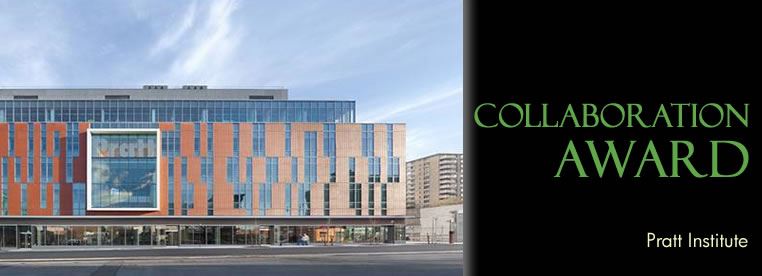On May 25, 2011, the NYC Brownfield Partnership will host its third annual Big Apple Brownfield Awards Ceremony at the NYU School of Law. The Partnership will recognize five of New York City’s most outstanding brownfield redevelopment projects.
Reception sponsored by AKRF, Inc.

At the site of the abandoned Penn Central Railyard, the Harlem River Yards Ventures faced the challenge of cleaning up contaminants that included abandoned underground tanks, lead and other metals, polyaromatic hydrocarbons related to coal and ash, and asbestos. The entire site was covered with fill or topsoil, and the new Harlem River Yard Intermodal Transportation and Distribution Center was built on top.
Harlem River Yards directly and indirectly created 700 jobs and created key railroad infrastructure that serves the NY Post, FedEx, and the City by providing a truck-to-rail waste transfer facility.

Created to replace the old Fulton Fish Market formerly located in southern Manhattan, the New Fulton Fish Market site in the Bronx was formerly a manufactured gas plant. Earlier operations had left coal tar, purifier waste, and a petroleum plume that affected three acres of groundwater and that all required remediation. The contaminated material was removed from the site, or recycled and reused on-site whenever possible.
The project employed innovative techniques and incinerated the waste to create energy using a waste-to-energy plant in Buffalo, NY. The contaminated coal tar that was incinerated at the facility reduced waste volume by over 90% and created approximately 7.6 MW of electricity, providing enough electricity to power 10,000 homes for three months.

The La Terraza site was formerly vacant land and an abandoned single story building previously used as a store, upholstery business, and dry cleaner. The dry cleaner operation left the solvent tetrachloroethene as a contaminant in the soil and groundwater. Remediation consisted of chemical treatment and a groundwater pump and treat system.
La Terraza is now an 8-story building with 107 affordable housing units, all allocated for families and individuals earning under 60% of the Area Median Income. Residents also have access to a below-grade parking structure, a shared courtyard, retail space, and community facility space.

The Atlantic Terrace housing development occupies land where a gas station operated until 1969, and was then vacant until 2007. The remedial investigation identified an earlier on-site petroleum spill. Remedial methods included soil removal, the installation of a vapor barrier, and post remediation groundwater monitoring.
The building is on track for LEED Gold certification. Its extensive green building elements include an efficient HVAC system, high-performance windows, a well-insulated exterior wall, locally and sustainably harvested kitchen and bathroom fixtures, Energy Star compliant lighting, and low-flow water fixtures. Atlantic Terrace encourages public and alternative transportation through its proximity to the subway, and the preferred parking rates it offers to tenants with fuel efficient vehicles.

Myrtle Hall of the Pratt Institute is located at the site of a former fast food restaurant in Brooklyn. Remedial activity included the removal of contaminated soils and the installation of a concrete cap. Underground storage tanks were also cleaned and removed before being disposed of at a metals recycling plant.
Myrtle Hall is now an administrative and academic building. Its construction was a collaboration among the Pratt Institute, the NYC Office of Environmental Remediation, and the Dormitory Authority of the State of New York.